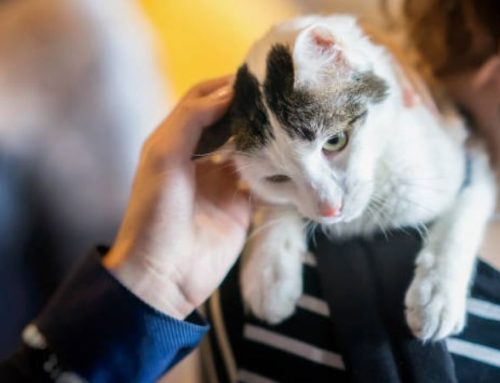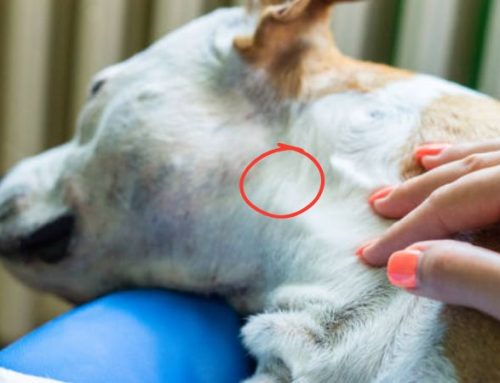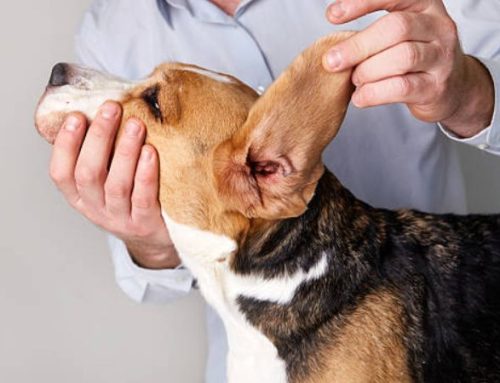Even the most playful and energetic cats can hide serious health issues, and anemia is one condition that often goes unnoticed until it starts affecting their daily life. Simply put, anemia occurs when a cat’s blood lacks enough red blood cells or hemoglobin to carry oxygen efficiently to its organs and tissues.
Without timely attention, this shortage can leave your feline feeling weak, lethargic, or even at risk of more severe complications. In this guide, we’ll explore the causes of cat anemia, how it’s diagnosed, treatment options, and what it means for your cat’s life expectancy.
What is Cat Anemia?
Cat anemia is a medical condition characterized by a reduction in the number of circulating red blood cells (RBCs), hemoglobin, or both in a cat’s bloodstream. Rather than being a disease on its own, anemia is typically a symptom of an underlying health issue, such as blood loss, bone marrow disorders, infections, chronic illness, or immune system dysfunction. When a cat is anemic, its blood cannot deliver adequate oxygen to vital organs and tissues, which can affect overall health and may become life-threatening if left untreated.

Red blood cells are produced in the bone marrow and play a critical role in transporting oxygen throughout the body. Each red blood cell contains hemoglobin, an iron-rich protein responsible for binding oxygen in the lungs and carrying it to tissues and organs. Adequate oxygen delivery is essential for maintaining the function of organs like the heart, kidneys, and brain.
When a cat has anemia, the decrease in red blood cells or hemoglobin reduces oxygen delivery, leading to symptoms such as lethargy, pale gums, weakness, rapid breathing, and in severe cases, organ damage or failure. Understanding how red blood cells work helps highlight why anemia can be a serious concern for cats of all ages.
What causes Anemia in Cats
1. Blood Loss
Blood loss is one of the most common causes of anemia in cats. This can be external, internal, or a combination of both.
- Trauma: Accidents like being hit by a car or falls can lead to severe blood loss.
- Parasites: Fleas, ticks, and intestinal worms (hookworms) can drain significant amounts of blood, especially in kittens.
- Bleeding tumors or ulcers: Internal growths, ulcers in the stomach, or other organs can cause slow, ongoing blood loss.
- Coagulation disorders: Conditions like hemophilia, or ingestion of anticoagulant rodent poison, prevent blood clotting, resulting in excessive bleeding.
- Post-surgical complications: Surgical wounds or sutures that break may cause significant bleeding.
Chronic low-grade blood loss can eventually lead to iron-deficiency anemia, resulting in smaller red blood cells with lower hemoglobin content.
2. Destruction of Red Blood Cells (Hemolysis)
Hemolytic anemia occurs when red blood cells are destroyed faster than the body can produce new ones. Causes include:
- Immune-mediated hemolytic anemia (IMHA): The cat’s immune system mistakenly attacks its own red blood cells. This can occur independently or secondary to infections, tumors, drugs, or vaccines.
- Infections: Viruses like feline leukemia virus (FeLV) or feline infectious peritonitis (FIP), and blood parasites such as Mycoplasma haemofelis, Cytauxzoon felis, or Babesia, can destroy red blood cells.
- Toxins and chemicals: Ingestion of onions, acetaminophen (Tylenol), zinc, copper, or other toxins can trigger RBC destruction.
- Drugs: Some antibiotics, antiparasitic medications, or other prescribed drugs may cause hemolysis.
- Genetic disorders: Certain breeds, such as Abyssinian or Somali cats, may inherit enzyme deficiencies like pyruvate kinase deficiency, causing chronic hemolytic anemia.
- Neonatal isoerythrolysis: Occurs in kittens when maternal antibodies attack their RBCs, usually within the first few days of life.
Signs of hemolytic anemia often include pale or yellowed gums, jaundice, lethargy, and in severe cases, collapse or shock.
3. Failure to Produce New Red Blood Cells
Sometimes, anemia occurs not because blood is lost or destroyed, but because the bone marrow cannot produce enough new red blood cells. Causes include:
- Chronic kidney disease: Diseased kidneys produce less erythropoietin, the hormone that stimulates RBC production, leading to anemia.
- Chronic illness or inflammation: Long-term diseases, infections, tumors, or hormonal disorders can suppress bone marrow function, reducing RBC output.
- Nutritional deficiencies: Lack of essential nutrients such as iron, copper, vitamin B12, vitamin B6, riboflavin, niacin, and vitamin E can impair red blood cell formation.
- Bone marrow disorders: Conditions like aplastic anemia, myelodysplasia, myelofibrosis, pure red cell aplasia, or leukemia interfere with the marrow’s ability to produce red blood cells.
- Toxins or drugs affecting marrow: Certain medications, chemotherapy agents, and chemicals can damage bone marrow and reduce RBC production.
Nonregenerative anemia is often gradual, and affected cats may initially adapt, showing only mild lethargy or loss of appetite.
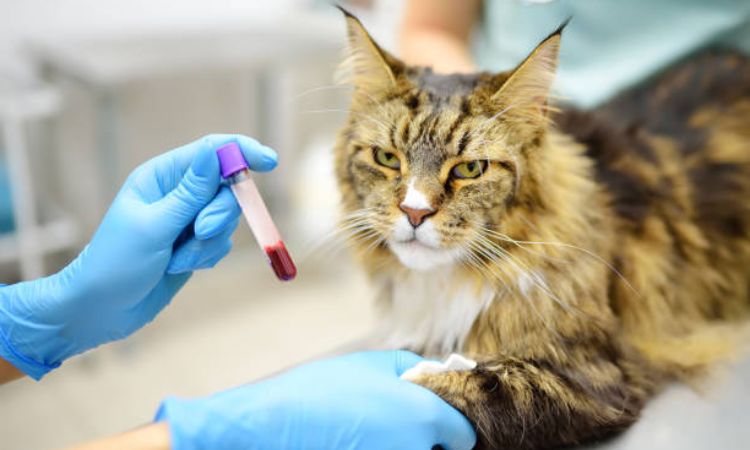
4. Mixed or Complex Causes
In some cats, anemia may result from a combination of factors. For example, a cat with chronic kidney disease may also have blood loss from gastrointestinal ulcers or hemolysis caused by an immune response. Accurate diagnosis by a veterinarian is essential to identify all contributing factors and develop a proper treatment plan.
Symptoms of Anemia in Cats
Anemia in cats occurs when there is a decrease in red blood cells (RBCs) or hemoglobin, leading to reduced oxygen delivery to the body’s tissues and organs. The severity and type of anemia, as well as whether it is acute or chronic, largely determine the symptoms a cat may show.
1. Lethargy and Weakness
One of the most common early signs of anemia is fatigue and decreased energy. Cats may appear weak, reluctant to move, or have difficulty jumping and playing. In severe or rapidly developing anemia, cats may collapse or be unable to stand, as the body struggles to deliver oxygen to muscles and vital organs.
2. Pale Gums and Mucous Membranes
A hallmark symptom of anemia is pale or whitish gums, lips, and other mucous membranes. In cases of hemolytic anemia or certain infections, gums may appear yellowish, indicating jaundice. Veterinarians often use gum color as a quick, non-invasive indicator of the cat’s red blood cell levels and overall oxygenation.
3. Rapid Breathing and Increased Heart Rate
Anemic cats often develop tachypnea (rapid breathing) and tachycardia (increased heart rate) as the body tries to compensate for reduced oxygen-carrying capacity. These compensatory mechanisms help maintain oxygen delivery to tissues but can lead to stress on the heart and lungs, especially in chronic or severe anemia.
4. Loss of Appetite and Weight Loss
Cats with anemia may show a reduced appetite (anorexia), often leading to weight loss and muscle wasting over time. Chronic anemia gradually diminishes energy levels, which can further reduce the cat’s interest in eating and normal daily activities.
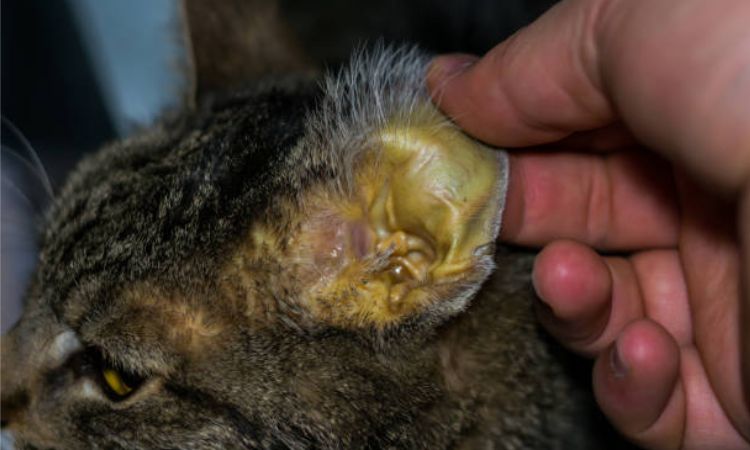
5. Behavioral Changes
Anemic cats may also exhibit noticeable changes in behavior, including:
- Hiding or seeking seclusion
- Decreased activity or playfulness
- Reluctance to interact with humans or other pets
- General irritability or signs of discomfort
These behavioral changes are often subtle in chronic anemia but can be more pronounced in acute, severe cases.
Treatment Options for Cat Anemia
The treatment of anemia in cats depends largely on the severity of the condition, the underlying cause, and the overall health of the cat. In cases of severe anemia, where the red blood cell count is critically low, immediate intervention is often required, and a blood transfusion may be necessary to stabilize the cat. Transfusions help restore oxygen-carrying capacity, relieve lethargy, improve organ function, and give the veterinarian time to identify and address the root cause of the anemia.
Once the cat has been stabilized, the focus shifts to diagnosing and treating the underlying cause. Because anemia is not a disease in itself but a symptom of another condition, effective treatment requires addressing the primary problem. Depending on the specific type and cause of anemia, treatment options may include:
- Immunosuppressive Medications:
- Steroids, such as prednisolone, and other immunosuppressive drugs like cyclosporine or chlorambucil, may be prescribed if the anemia is caused by immune-mediated destruction of red blood cells. These medications work by suppressing the immune system’s inappropriate attack on the cat’s own blood cells.
- Antibiotics:
- If anemia is secondary to bacterial infections that are destroying red blood cells or affecting the bone marrow, antibiotics can help control or eliminate the infection and reduce further damage.
- Gastroprotectant Medications:
- For cats with stomach or intestinal ulcers, gastroprotectants are often used to coat the lining of the digestive tract and prevent further blood loss due to ulceration or vomiting.
- Deworming Treatments:
- Parasites such as hookworms, fleas, or intestinal worms can lead to chronic blood loss anemia, especially in kittens. Appropriate antiparasitic medications can stop ongoing blood loss and improve red blood cell counts.
- Surgical Intervention:
- Surgery may be required in cases of bleeding tumors, internal trauma, or postoperative complications where blood vessels are compromised. Surgical correction stops ongoing blood loss and allows the cat’s red blood cells to recover.
- Erythropoietin Replacement Therapy:
- Cats with chronic kidney disease may experience anemia because their kidneys are unable to produce enough erythropoietin, a hormone necessary for red blood cell production. Synthetic forms of erythropoietin, such as darbepoetin, can stimulate the bone marrow to produce new red blood cells.
- Iron and Nutritional Supplementation:
- Iron supplements may be indicated if anemia is caused by iron deficiency, often secondary to chronic blood loss. In addition, ensuring the cat has adequate vitamins and minerals is important for supporting red blood cell production.
- Supportive Care for Trauma or Severe Cases:
- If the anemia results from trauma, surgery, or acute blood loss, additional supportive treatments may include oxygen therapy, intravenous fluids, repeated transfusions, and intensive monitoring. These measures help maintain oxygen delivery to vital organs while the cat recovers.
- Long-Term Management:
- For cats with chronic or recurrent anemia, ongoing monitoring and treatment may be necessary. This can involve regular blood tests, dietary adjustments, and periodic medication administration to prevent relapses and maintain overall health.
In all cases, the prognosis depends on the underlying cause, the cat’s response to treatment, and the speed at which intervention occurs. Early detection and prompt veterinary care are key to improving outcomes and minimizing the risks associated with anemia in cats.
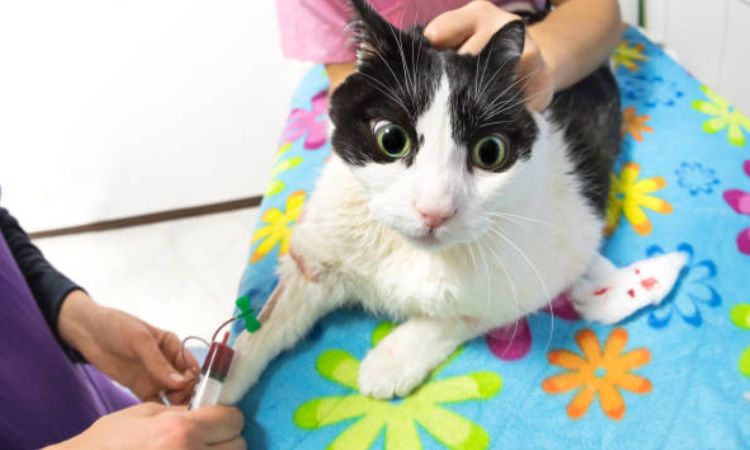
Life Expectancy of Cats with Anemia
The life expectancy of an anemic cat depends heavily on the severity of anemia, the underlying cause, and how quickly treatment is started. Anemia is not a disease itself—it’s a symptom of another condition—so outcomes vary widely. Here’s a detailed breakdown:
1. Acute or Severe Anemia
- Causes: sudden trauma, severe blood loss, hemolytic anemia (immune-mediated), poisoning.
- Life expectancy: without immediate treatment, these cats can die within hours to days.
- With prompt veterinary care (transfusions, supportive care, and treatment of the underlying cause), cats can recover fully, though follow-up treatment may be needed if the cause is chronic or recurring.
2. Chronic or Mild Anemia
- Causes: chronic kidney disease, chronic infections, chronic blood loss (parasites, ulcers), chronic inflammation, mild immune-mediated conditions.
- Life expectancy: varies. Cats with manageable conditions (e.g., mild chronic kidney disease with supportive therapy) may live months to years, but progressive disease can shorten lifespan, especially if anemia worsens over time.
3. Anemia from Chronic Kidney Disease
- The kidneys produce less erythropoietin, which limits red blood cell production.
- Life expectancy: depends on disease management. With erythropoietin therapy, iron supplementation, and regular monitoring, cats may live 1–3 years or longer, but anemia often worsens over time.
4. Immune-Mediated Hemolytic Anemia (IMHA)
- Life expectancy: 20% to 75% mortality risk depending on severity, response to immunosuppressive therapy, and complications like blood clots or organ failure. Cats that respond to treatment and remain stable can survive months to years, but relapses are possible.
5. Anemia due to Cancer or Bone Marrow Disorders
- Causes: leukemia, myelodysplasia, bone marrow failure, tumors.
- Life expectancy: often poor, ranging from weeks to months, depending on the type and progression of the disease and response to treatment.
Key Factors Influencing Survival
- Speed of diagnosis and intervention: Early detection and treatment improve outcomes.
- Underlying cause: Treatable causes (like blood loss from trauma or parasites) have a good prognosis; chronic or untreatable causes shorten life expectancy.
- Response to therapy: Some cats respond well to transfusions, medications, and supportive care, while others do not.
- Age and overall health: Younger cats with no other illnesses tend to recover better than older or immunocompromised cats.
You may be interested:
- Cat Pneumonia: Symptoms, Survival Rate, and Life-Saving Treatment Guide for Owners
- Cat Stomatitis & Mouth Sores: Causes, Home Remedies, and Life Expectancy
Anemic cats can have widely varying life expectancies—from hours in severe acute cases to years in chronic, manageable cases. Early veterinary intervention, ongoing monitoring, and treatment of the underlying cause are critical for improving survival.



